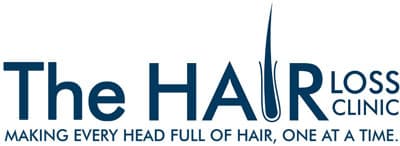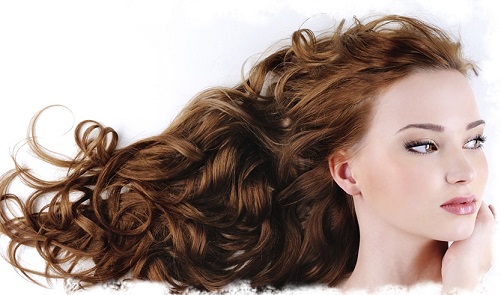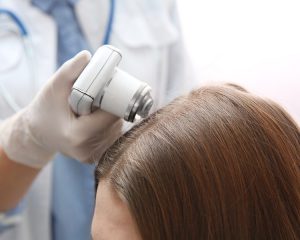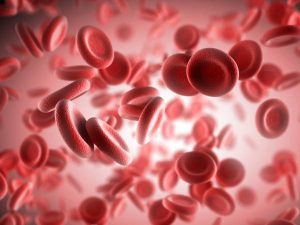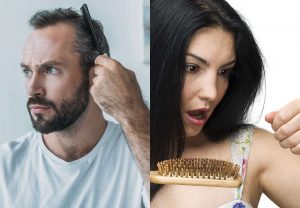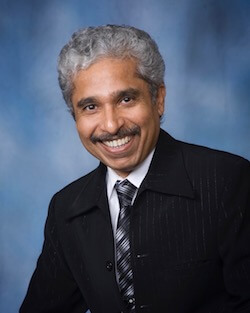by Tony Pearce RN.
Specialist Trichologist, National Trichology Services
Whoever coined the phrase “you are what you eat” was probably thinking about the health of their hair when they said it!
With the exception of our bone marrow and the cells that form the lining of our stomach, the cells of the hair bulb reproduce at a greater rate than any other body cells. Because of its rapid growth, hair is very sensitive to internal or external changes that may affect our body. Hair loss or dull, dry hair is often the first indicator to a developing internal disturbance. It’s little wonder then that the condition of our hair is directly affected by the foods we eat or don’t eat.
A gradual thinning of the hair in an ‘all over’ way may reflect low iron, zinc, or calcium levels. It could also herald the onset of a physical disorder such as diabetes or problems of the thyroid gland. With low iron, zinc, vitamin C deficiency, or a thyroid disturbance, the hair is very often dry, brittle and lustreless. Hair texture and colour may also be altered with some deficiencies.
In over 70% of women who present with a thinning hair problem, a low iron level is either the primary or most frequently underlying additional cause of the condition. If a woman is vegetarian, or consumes little iron-rich foods and has a history of heavy periods, she should intermittently supplement her diet with a nutritional iron formula.
Proteins are required by our body for tissue and cell repair and growth. The average daily diet should contain 30% proteins from various sources to maintain good health. Proteins account for about 97% of the structure of our hair, and 15-20% of our protein intake is utilised for skin and Hair Loss.
In this country most people would have an adequate protein intake. However, some groups such as the elderly, those with physical, or chronic psychiatric disabilities, young children, people who are too poor to purchase high protein foods, or those ignorant of their nutritional requirements can be at risk.
The “tea and toast” routine of some elderly folk is well documented; they and those with disabilities sometimes lack the physical capacity or even the motivation to prepare and cook a meal. Young children will often have only two or three types of food that they’ll readily eat, potentially leaving them vulnerable to nutritional deficiencies in other areas.
When protein intake is inadequate the hair becomes fine and thin, and hair breakage, split ends, or hair loss usually results. Research studies have shown that if we go more than four hours without eating, the energy levels to our hair follicles is decreased, and the formation of hair protein cells is affected.
Health professionals are increasingly seeing patients with signs and symptoms of deficiency in the minerals zinc or chromium.
Zinc is an essential element required for a number of our body’s biochemical processes including the control of blood sugar levels and immune system function. A zinc deficiency may be caused by poor diet, absorption problems of the bowel, or the excessive use of alcohol or diuretics. Low zinc levels are commonly found in people who work in the automotive repair industry, welders, the construction (from cement dust) or paper/pulp industries. This is because these workers are often exposed to increased levels of lead, cadmium or mercury, all of which antagonise the absorption and utilisation of zinc. Low zinc will result in dry, brittle hair and hair loss.
Chromium is an essential trace element required for the maintenance of normal blood sugar and cholesterol levels. Diffuse hair loss, diabetes-like symptoms, and fatigue may indicate a lack of chromium. People whose dietary intake is high in processed foods will commonly be deficient in chromium. Other problems that can affect chromium status are a low vitamin B6, or iron overload. Yeast is a good source of chromium, but if you have problems with thrush or yeast allergy, a non-yeast chromium supplement should be taken.
Scaling, flaky scalps that are also red and itchy can be the result of a diet that has too much fat or sugar content. These conditions are usually aggravated by stress, smoking or excessive alcohol use.
Fortunately the news is not all doom and gloom! Particular foods, eaten at the right time of day can dramatically improve the condition, density and strength of our hair. Our skin, including our scalp will also reap the rewards of an improved diet. Remember to drink at least 6-8 glasses of water per day. Vegetables, salads and fruits should account for about one-third of our total dietary intake for at least five days per week. Different vegetables and fruits do not all have the same nutritional value, so it is important to include a wide variety of each in the daily diet.
Here is one daily dietary example that will maintain optimum hair health:
Breakfast: The most crucial meal of the day for our hair as follicle energy levels is at their lowest point. Some form of “complete” protein (complete proteins contain all the essential amino acids) is essential at breakfast. Meat, poultry, fish, eggs and milk all provide complete protein in varying quantities. Poached or scrambled eggs on high-fibre toasted bread, juice, or a high-fibre cereal in skim milk/soy are an ideal start. A McDonald’s sausage and egg “McMuffin” or “Big Breakfast” (without the hash brown) and orange juice is an excellent protein-packed breakfast.
Morning Tea: A piece of fresh fruit, juice or water to hydrate the hair and skin. Most of us love our “morning cuppa” of coffee or tea, but consume them in moderation. Coffee, tea and alcohol are diuretics and dehydrate our body cells. Additionally, excessive coffee consumption may lead to a lowering of oestogen levels in women, whilst the tannin contained in tea is known to decrease nutritional iron status.
- Lunch: Lunch is the next most important meal of the day but the easiest to overlook. A protein (seafood/chicken/meat) and vegetable pasta or risotto, or turkey and salad sandwich on wholemeal will fuel our body for the afternoon. If you enjoy salmon as a filling or with a salad, crush and consume the bones, as they are an excellent source of calcium.
- Afternoon Tea: Sliced raw vegetables preferably, or fruit. Avoid eating bananas or nuts at this time because their digestion time is too long to assist hair follicle function.
Dinner: This is the least important meal for hair follicle energy levels. Consume a light meal of some form of complete protein with steamed vegetables or salad. Fruit salad or a low fat yogurt if you enjoy a dessert.
Supper: Warm skim dairy or soymilk with a piece of wholemeal toasted bread. This combination will usually help to give us a restful night’s sleep, prevent the “midnight munchies”, and sustain protein levels for our body to utilise.
If you are experiencing hair loss or scalp problems always consult the advice of a qualified trichologist. If someone is advertising treatments for these conditions, inquire what their qualifications/ experience is.
Copyright Anthony Pearce 2005. *References for this article available on request
